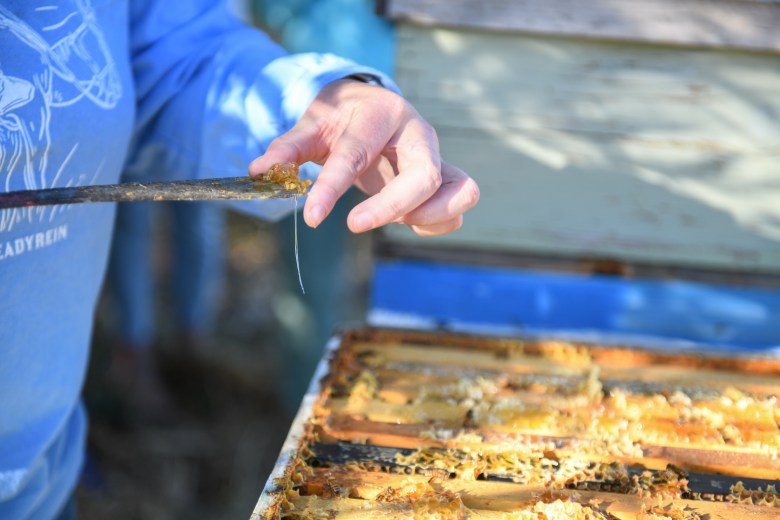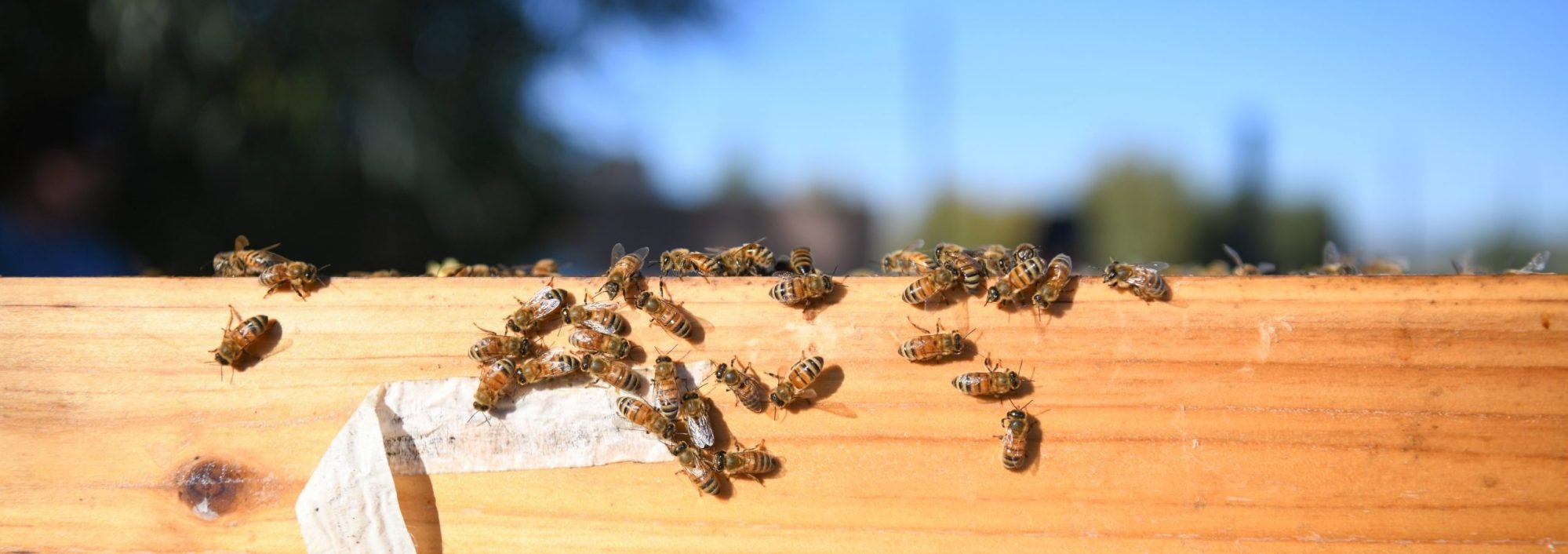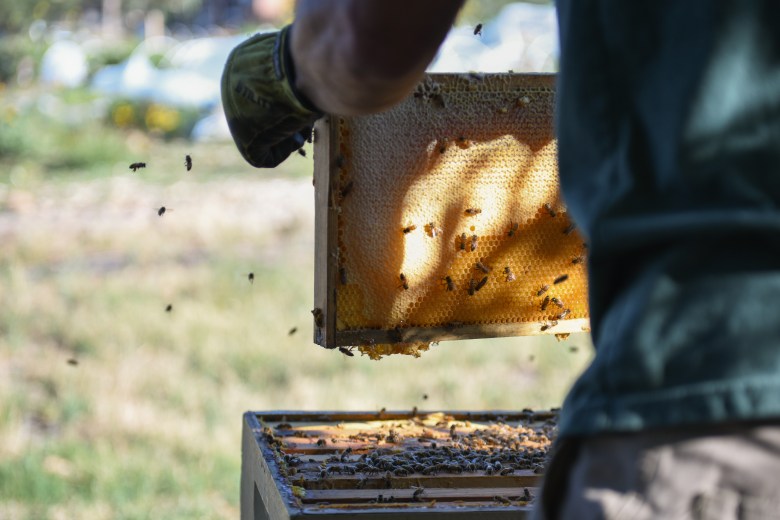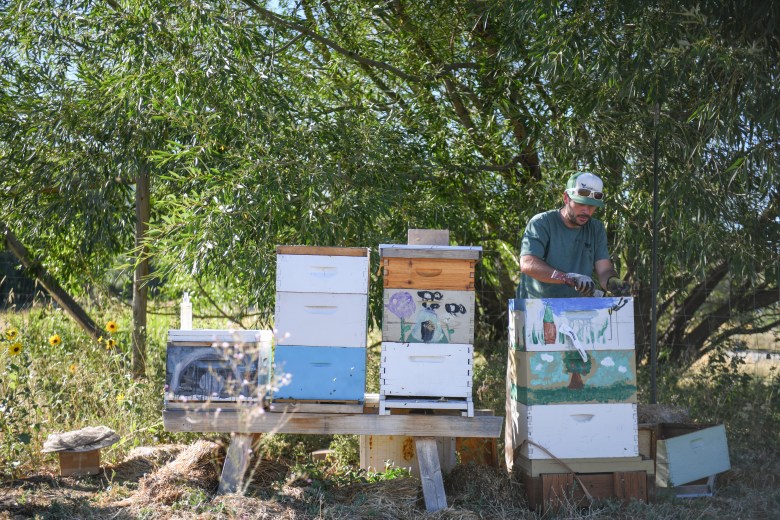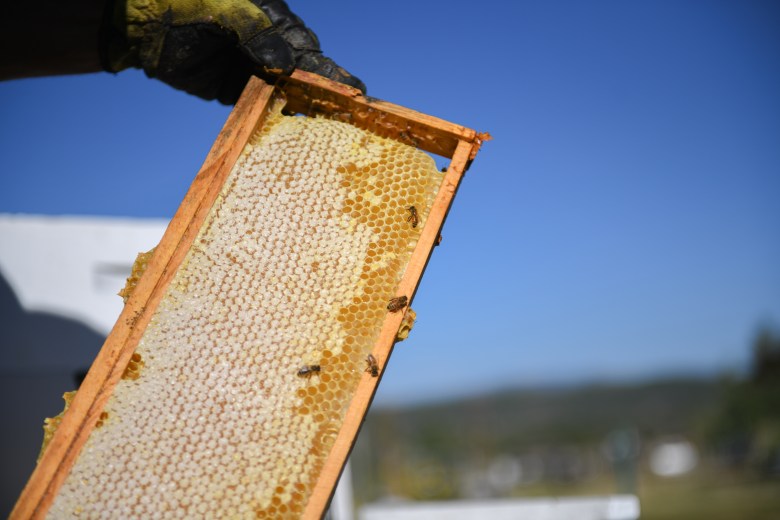On one of the last days in August, with the sun still high above the westward mountain range, a class of curious apiarists gathered among the rows of vegetables and flowers at the Summit Community Gardens. The attendees were there to learn from Mike McKinney of Root Revival. After fielding a few questions, McKinney, dressed in a t-shirt, pants and flip-flops, directed the group over to the hive that sits in the northwest corner of the garden under the shade of a willow tree.
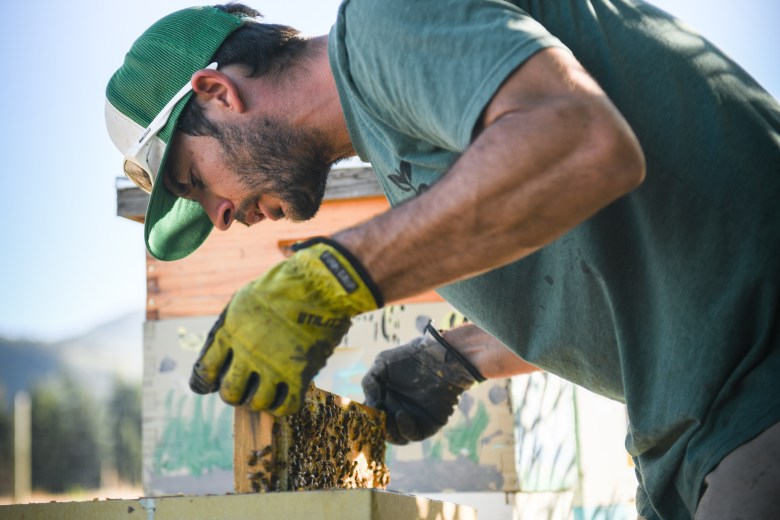
McKinney explained that the bees were busy taking advantage of the abundance of flowers this time of year, so a good number of them wouldn’t be in the hive, hence why he could get by with his chosen attire and not worry about putting on a protective suit.
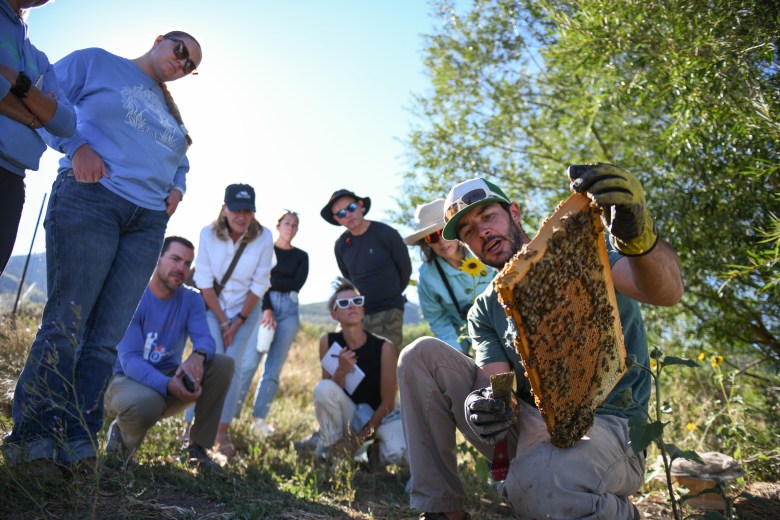
“Why do the bees leave when we put smoke in the hive?” McKinney asked the group. He compared it to what people would do if they smell or see smoke in their house: They get out. The smoke of choice was burning burlap, torch ignited and blown into the hive and then onto the frame.
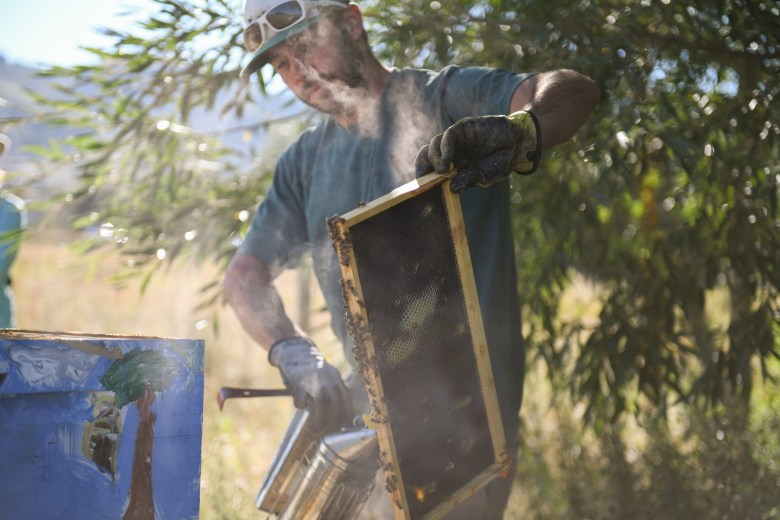
At the end of the class, the group served honey, fresh out of the hive. McKinney asked for a volunteer to help carry the top box, heavy with golden honey and honeycomb, to the back of his truck so he could transport it for harvest. This marks the final honey harvest of the year, and the top box will not be replaced. Bees in the hive will spend the remainder of the summer into fall gathering honey to store in the hive to live off of this winter.
McKinney isn’t off the hook during the off months. He explained how beekeeping is a year-round task. During the winter months he will continue to check on the hives he maintains, feeding sugar water to hives low on honey store and keeping entrances clear of snow buildup to ensure there is adequate air flow.
The honey that was harvested will be given in gift jars to attendees of the Summit Community Garden and EATs (Eat Awesome Things) Farm to Fork event at the Pendry on Sept. 12. Tickets are available at summitcommunitygardens.org.
